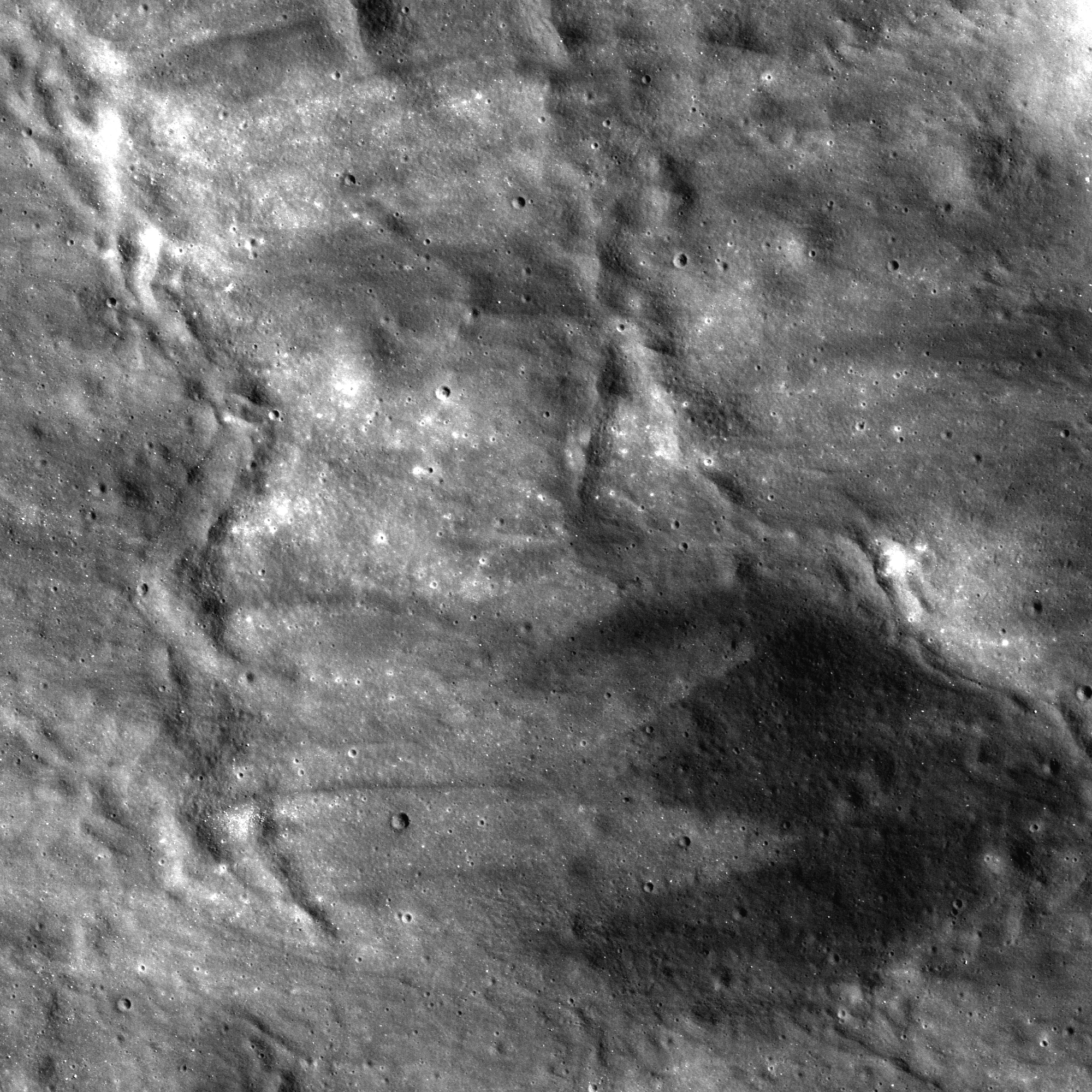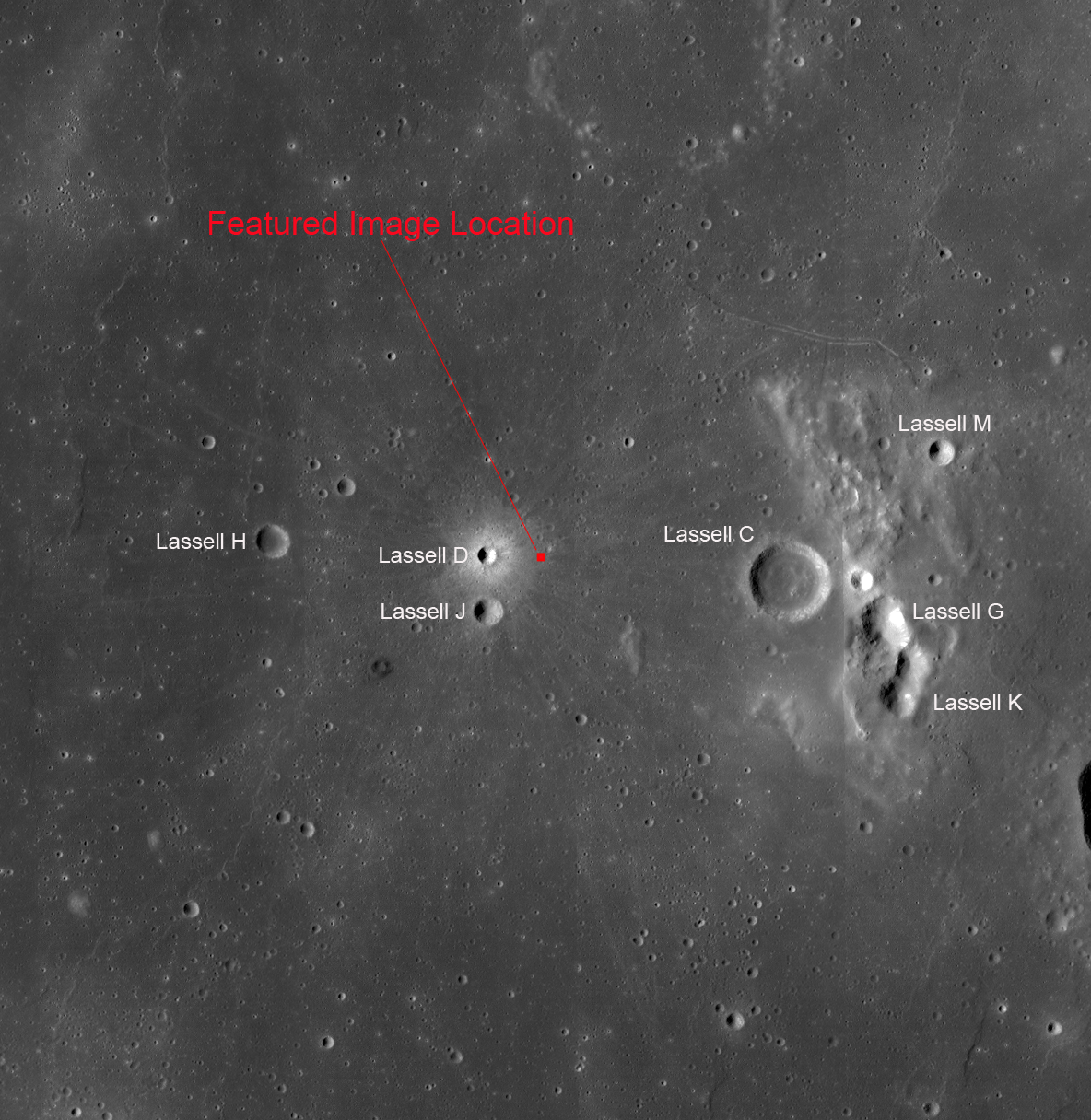
The complex geologic process of impact cratering often results in a diverse medley of landforms and other surface features. The more nuanced of these are best observed in fresh craters because the subtlest attributes of impacts are those most easily removed by space weathering. Lassell D crater (2 km diameter) has been described as "one of the freshest craters on the Moon" (Muller et al., 1986). In the proximal (nearby) ejecta blanket we see a hummocky, streaked surface with dune-like forms, ribbon-shaped lobes, and an eye-catching admixture of low- and high-reflectance soils. Immediately following the high-energy of impact, advancing walls of ejecta hugged the ground and moved like a dry tsunami across this region.
The crenulations are the result of mechanical interactions of the moving debris with pre-existing topography. As the wave of rock and dust is arrested by this resistance, some portions of the debris continue flowing while others slow and stop moving. The result is a wavy landform, a cross-section of which might reveal how the lobes partially rode up and over each other, hence the descriptive term "imbricated deceleration lobes."
As regolith redevelops and matures over the tens of millions of years to come, these features will gradually diminish. Which features would disappear first and why? Examine the full NAC frame below. Additional examples of fresh impact features can be found in Kamarov, Icarus, and The Lavish Lobes of Necho R.
Published by James Ashley on 28 November 2012
